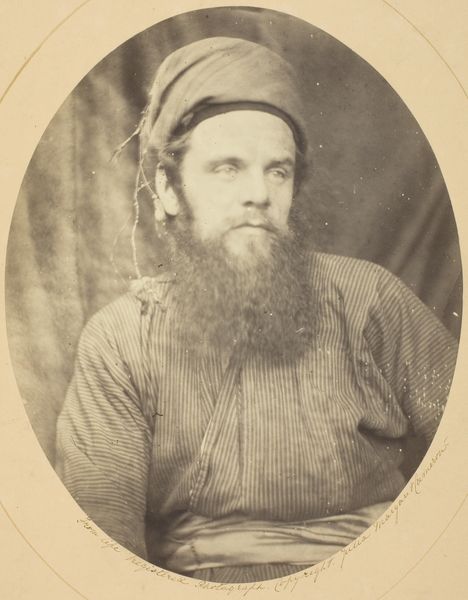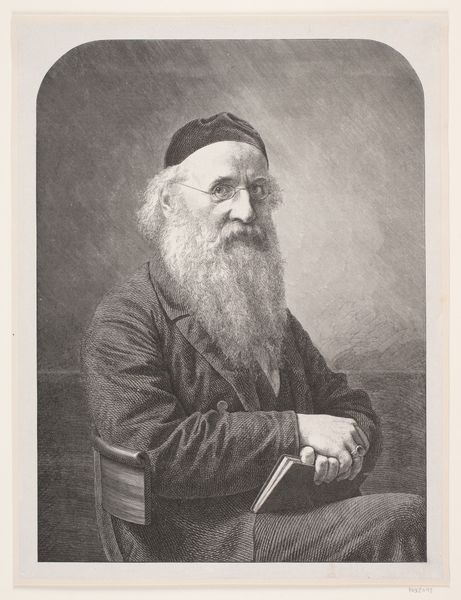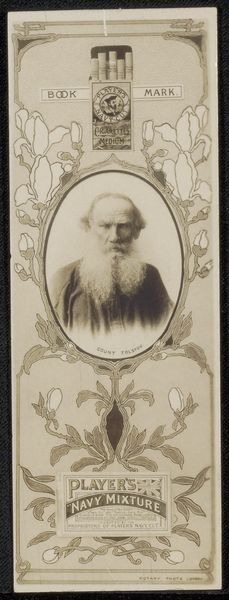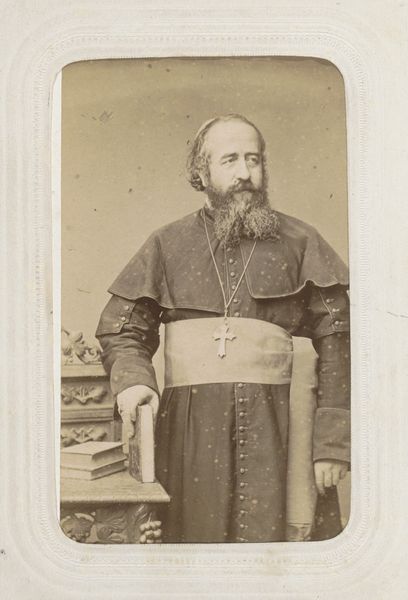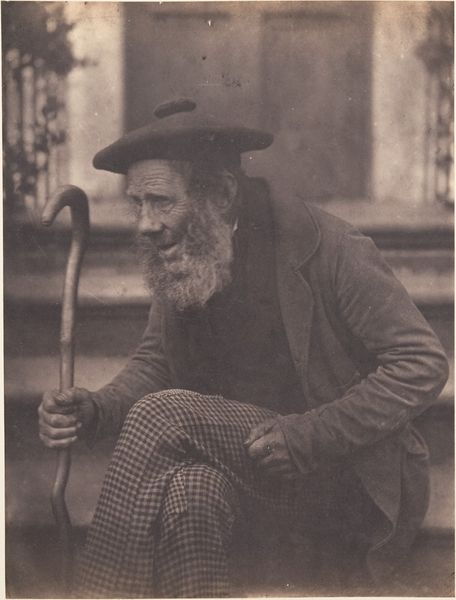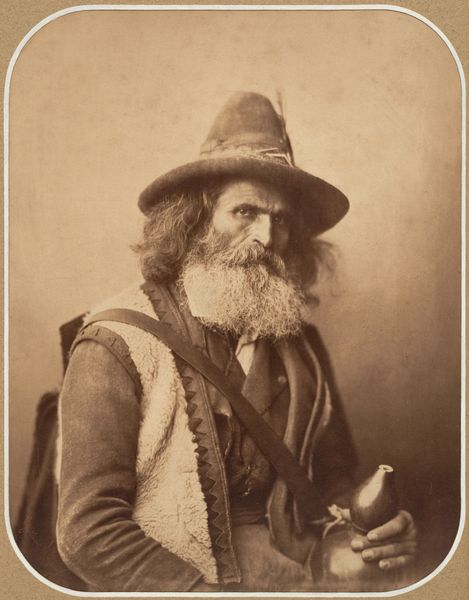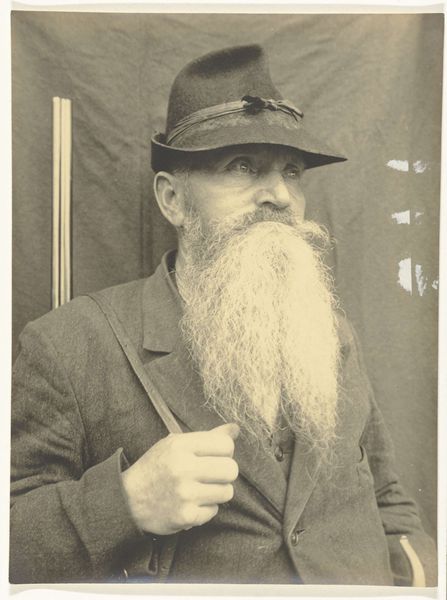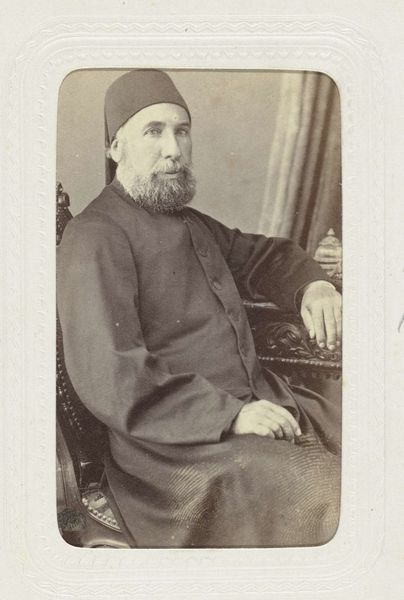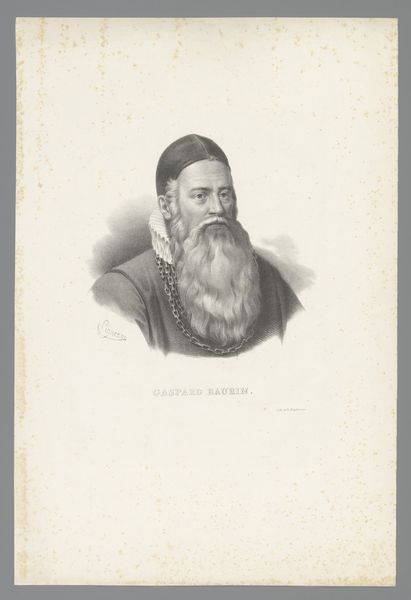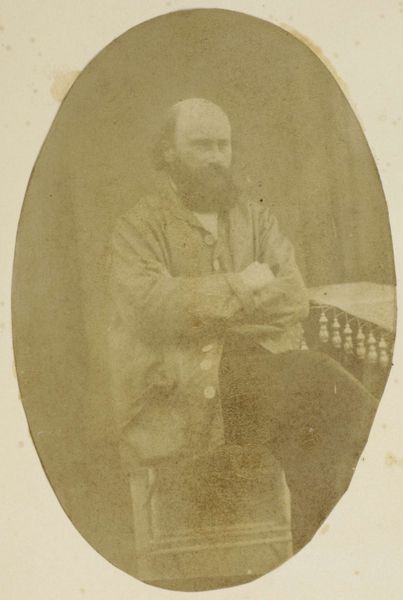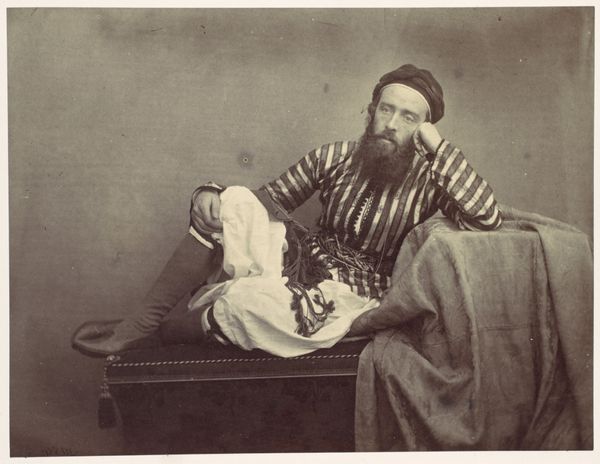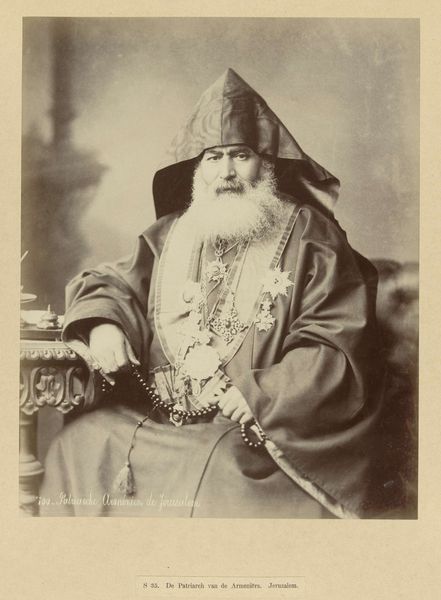
print, photography, gelatin-silver-print
#
portrait
# print
#
archive photography
#
photography
#
historical photography
#
gelatin-silver-print
#
realism
Dimensions: height 210 mm, width 150 mm, height 322 mm, width 498 mm
Copyright: Rijks Museum: Open Domain
Curator: Here we have a fascinating gelatin-silver print, “Portret van een monnik in pij,” or “Portrait of a Monk in Habit,” dating from around 1886 to 1896. The photograph is attributed to Henry Pauw van Wieldrecht. Curator: The photograph has a melancholic feel, doesn't it? A somber portrait rendered in tones that speak of history, capturing an aging man weighed down with what one presumes are faith and dedication. The weight of his rosary almost pulls at his simple robe. Curator: Precisely, and consider the tangible qualities of a gelatin-silver print. This specific photographic process lends the image its tonal range, and physical permanence; allowing it to carry social meanings beyond its creation. The materiality connects us to a late 19th century practice and economy. Curator: Absolutely, and its important to consider what kind of statement is being made here. How the presentation, pose, clothing of this figure, can be a stand-in for piety, and adherence to what may seem like outmoded ways. But isn't it all performative? To be seen in this way—perhaps against the increasing secularity of the time? Curator: It's quite likely that this image would be circulated widely for social capital. What do the modes of reproduction—the print, the card, or a publication—tell us about the intended consumer and its relation to social class? Curator: Good point. Consider how this photograph might have been used – perhaps for missionary fundraising efforts or simply as a token of religious devotion in an era grappling with industrialization and shifting social structures. Whose gaze were they seeking? Curator: I’d even push this into the current market—examining value, labor, distribution, collecting...how does it function as a piece for sale at the Rijksmuseum giftshop today, a contemporary site of labor? Curator: These sorts of images become valuable because they carry historical and social narratives; allowing us to reflect on enduring questions of belief, power, and identity and their place within religious hierarchies. Curator: An exploration, for sure. This simple artifact holds layers that are connected to larger industries and practices across time. Curator: Exactly, by examining social impact, we give this material picture much richer historical context.
Comments
No comments
Be the first to comment and join the conversation on the ultimate creative platform.

